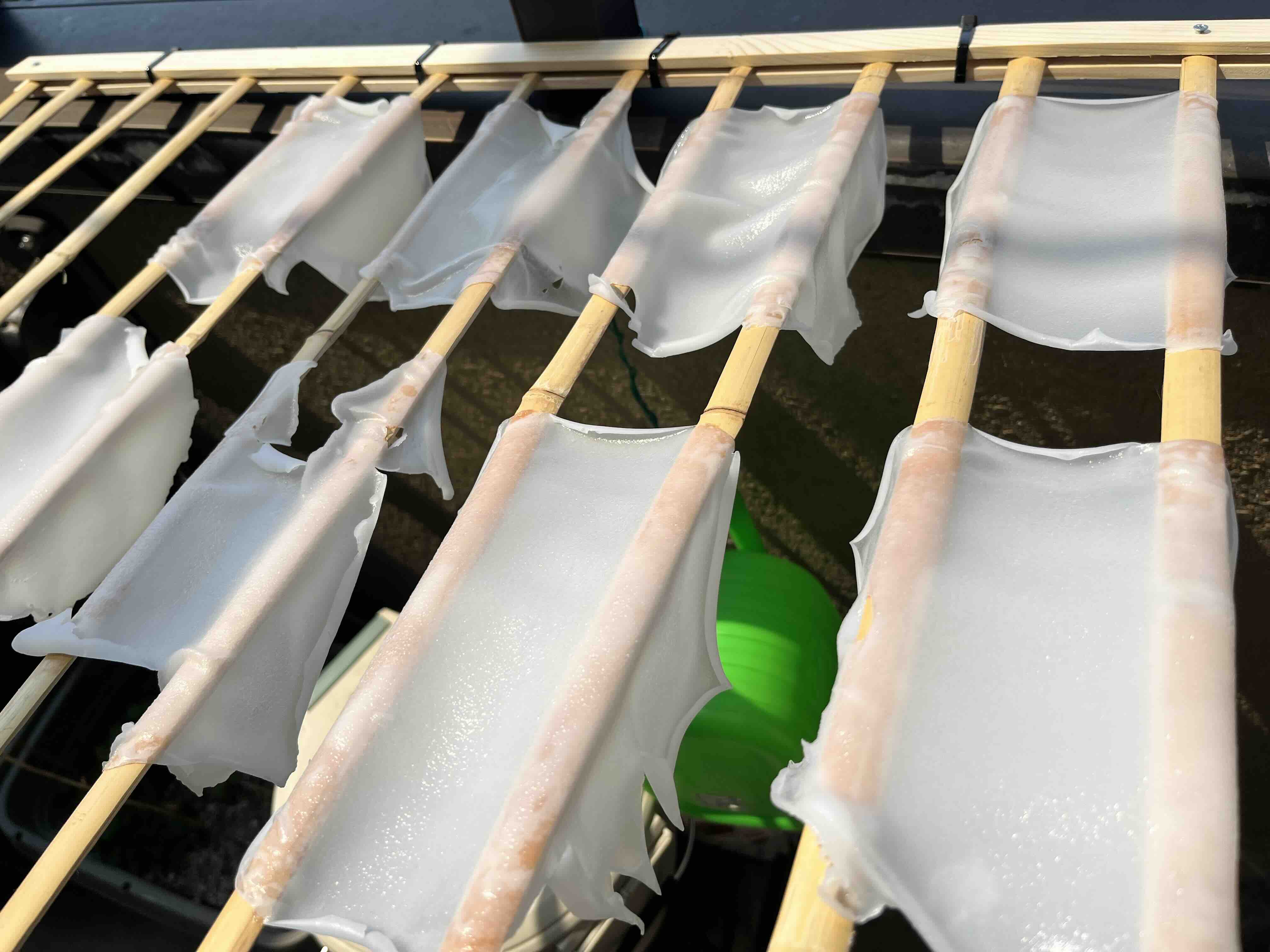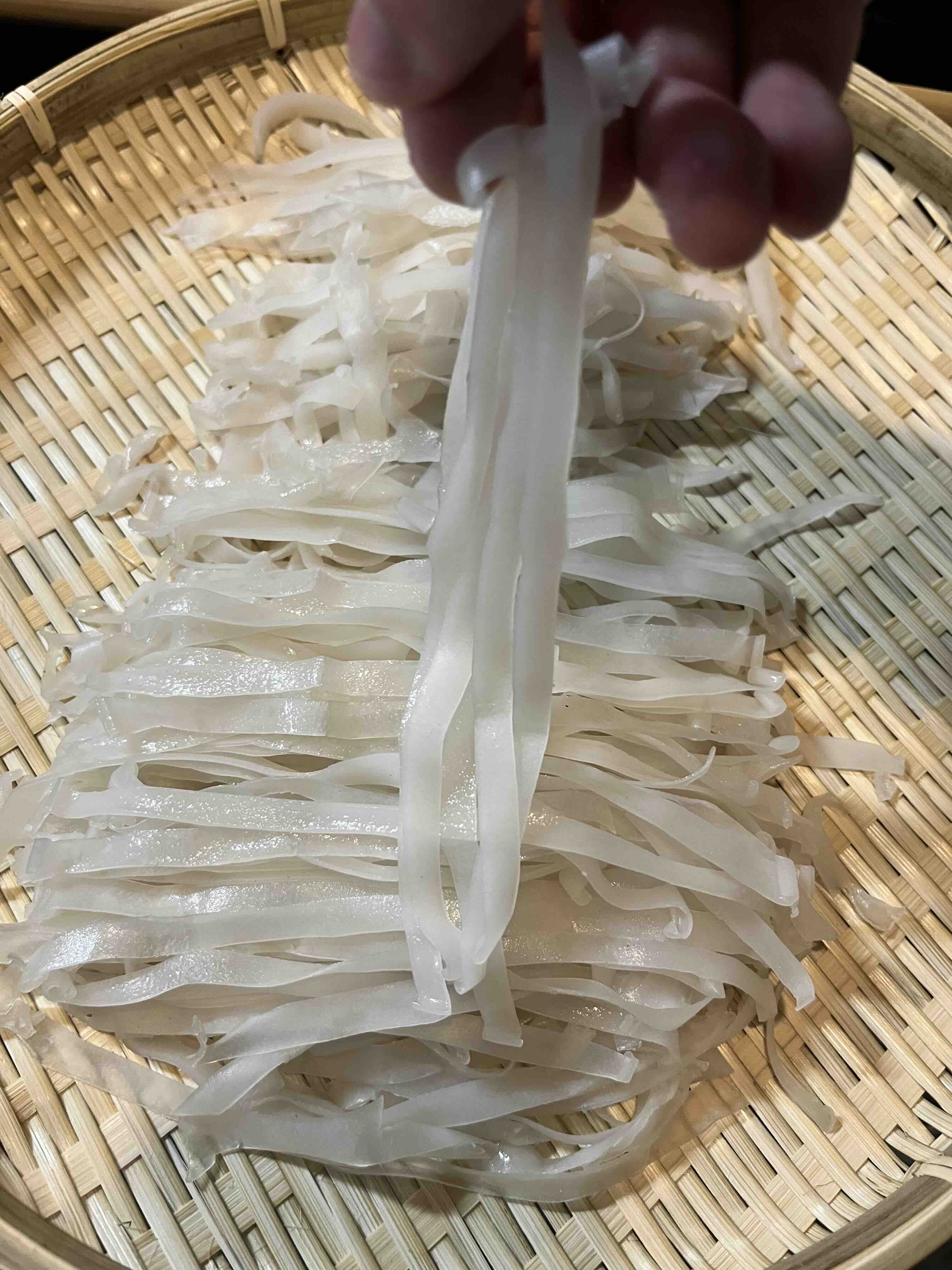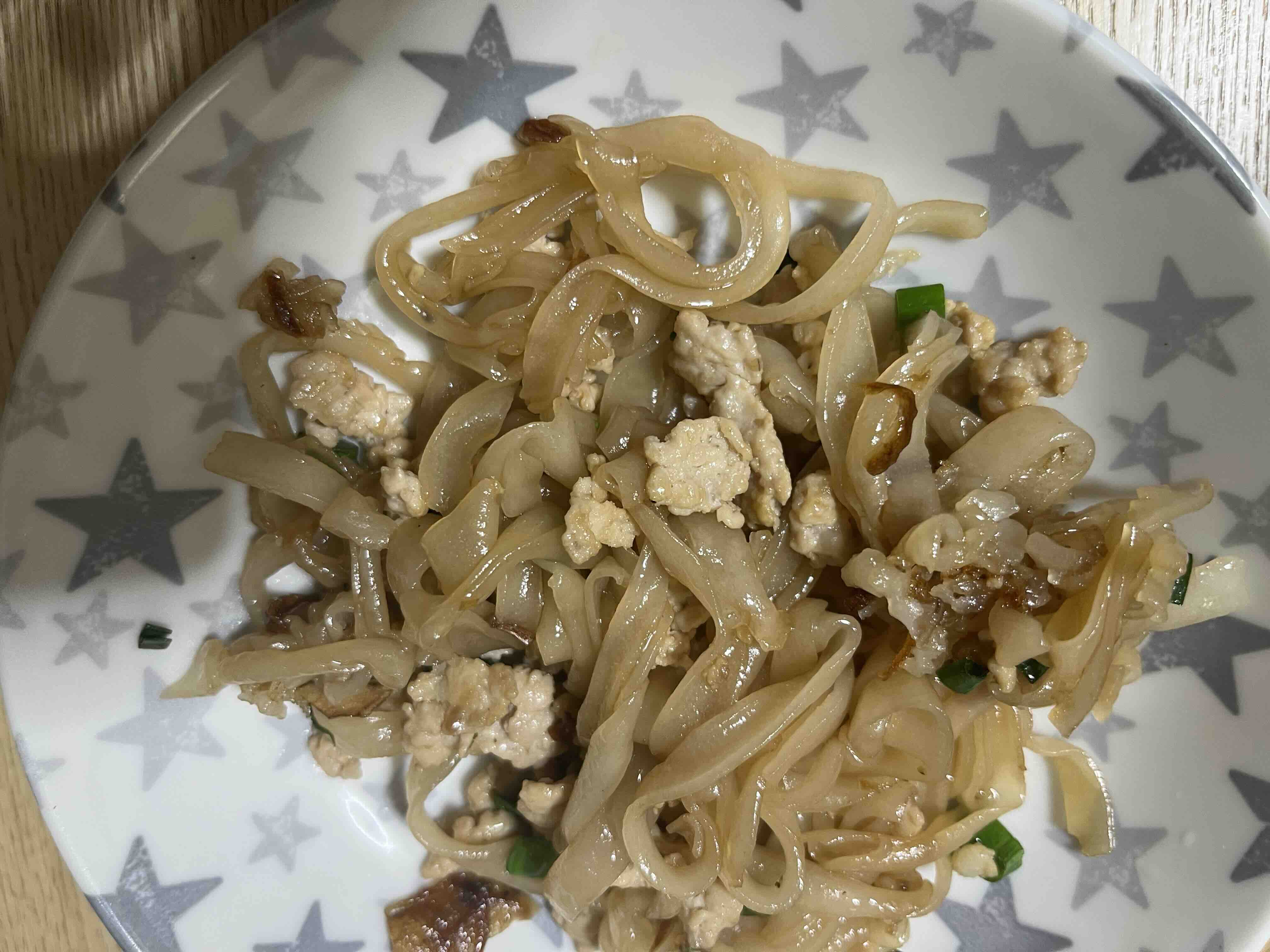
Third Noodle Experiment: Progress with Pho Noodles in Japan
March 22, 2025
Third Noodle Experiment: Progress with Pho Noodles in Japan
Kicking Off with Confidence
Today, March 22, 2025, I tackled my third attempt at making pho noodles after two failures. Armed with a bit more experience, this round felt more professional. I started by soaking 200g of Thai Jasmine rice for 6 hours and 30 minutes. The next morning at 6:30, I began grinding it with the same meat grinder from last time—until my wife suggested switching to our old blender. She was right: the rice came out smoother with less residue. Lesson learned: listen to my wife (haha)—or better yet, invest in a proper grinder.

The Recipe
Here’s the mix I settled on:
- Thai Jasmine rice: 200g (soaked and ground)
- Water: 620ml
- Rice flour: 65g
- Tapioca starch: 40g
- Potato starch: 60g
- Salt: 1.5g
- Peanut oil: 1g
After mixing, I let the batter rest for 55 minutes while having breakfast with my family. Then, I drained the water that settled on top and replaced it with an equal amount of fresh water.
Steaming Success (Mostly)
I set up my steaming rig with a glossy cloth stretched taut over a pot. The first few pours were a breeze—sheets came off easily, without tearing, and looked even. After about 30 minutes, though, the cloth started sagging, causing the batter to pool unevenly. Note to self: swap out the cloth mid-session next time to keep it taut.
By 9:30 AM, I’d steamed all the batter and laid the sheets out to dry indoors on a bamboo rack. The weather was mild and sunny, around 16°C—decent drying conditions.

Family Time and Drying Tweaks
With the noodles drying, I took my 2-year-old daughter to the park for a couple of hours while my wife hit the gym. Back home, the sheets still felt damp, so I moved them outside under the sun for an hour.
By lunchtime, I whipped up fried rice for me and my daughter (with pickled beef for me—practice for future sales). My wife had black bean porridge.
Cutting and Oiling
After lunch, I tackled cutting the noodles. They had firmed up nicely—less sticky than in my last two attempts—but still clung together a bit. Brushing on some peanut oil made them glossier and easier to separate. Nam Định pho doesn’t use oil, but as a learner, I’m experimenting. The result? Chewy, less powdery noodles with a subtle improvement in texture.

Taste Tests Galore
First, I blanched a small batch for a taste test. Progress! They were chewy, less starchy, and the raw rice smell was fainter.
For dinner, I stir-fried a portion for my daughter—she devoured it, a huge win for me.

My wife got creative, using four uncut sheets to make Hue-style pho rolls, inspired by her Hue grandmother. They turned out delicious, though the sheets were a tad thick for rolling. Next time, I’ll pour thinner ones for her.
Finally, I cooked a quick broth to try the noodles pho-style. I blanched them again (maybe too long after my lunchtime test), and after adding hot broth, they turned mushy—still edible but not ideal. Some strands held their chewiness, though, which felt like a step forward.

Reflections and Next Steps
This wasn’t perfect, but it was my best attempt yet. The noodles worked well for stir-frying and rolling, and even the broth version showed improvement. I steamed faster, measured more precisely, and made more dishes than before. Cutting also got easier.
Next time, I’ll refine the blanching process, pour thinner sheets for rolls, and keep pushing toward that signature Nam Định texture. I’m getting closer—confidence is up!